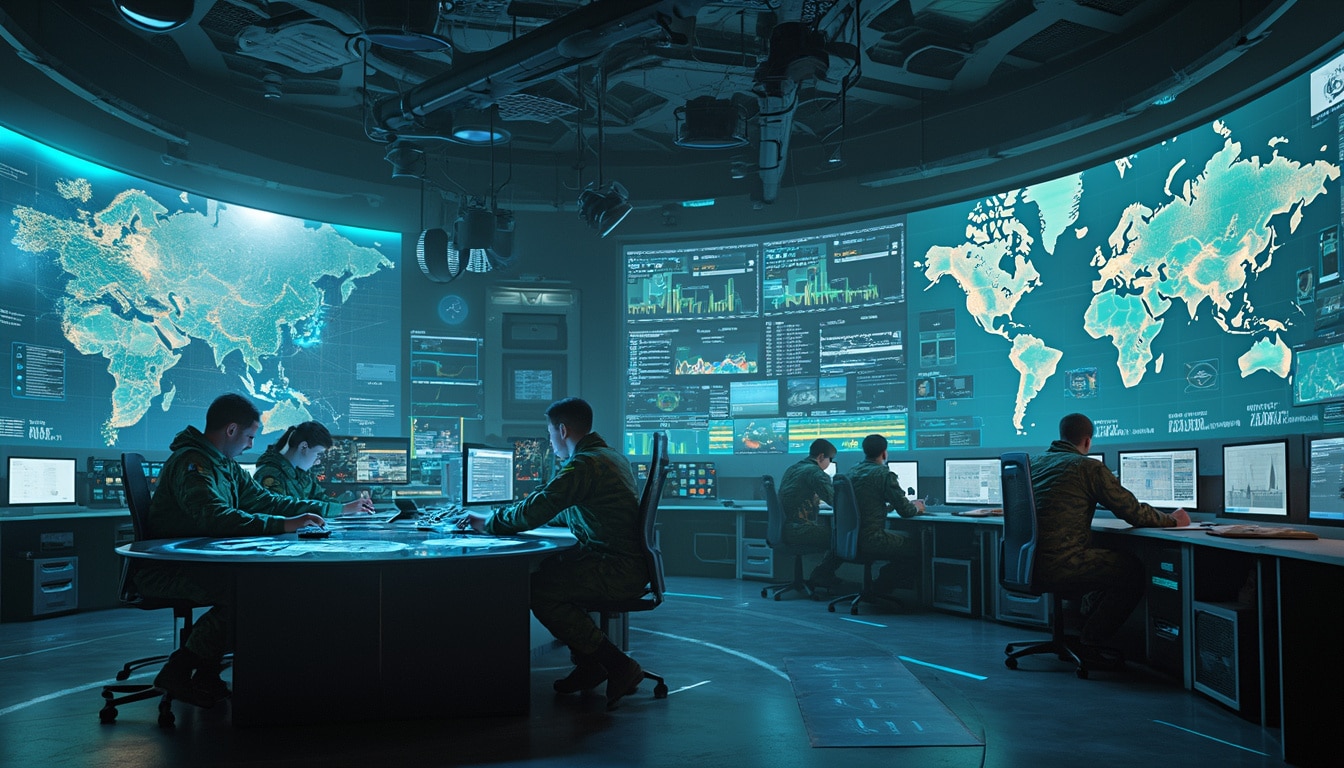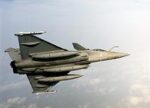In the shadows of the vast expanses of the Indo-Pacific, a silent revolution is preparing. The American military is redefining modern warfare through cutting-edge technologies. The quest for increased precision and range becomes the key phrase.
As geopolitical tensions intensify, armed forces are turning to deep sensing to anticipate and neutralize threats with unparalleled efficiency. Systems such as the Terrestrial Layer Systems (TLS) and the High Accuracy Detection and Exploitation System (HADES) illustrate this technological advancement. By centralizing and analyzing massive quantities of data, tools like the Tactical Intelligence Targeting Access Node (TITAN) enable unprecedented coordination on the battlefield. This innovative approach aims to provide comprehensive situation awareness, essential for rapid and strategic decision-making. Investing hundreds of millions of dollars, the Department of Defense affirms its determination to dominate the military arenas of the future. This strategy is part of a broader vision of domain convergence, where land, air, sea, space, and cyberspace intertwine harmoniously.

Table des matières
ToggleWhat is deep sensing?
Deep sensing represents a major technological advance in the field of military surveillance and detection. This approach involves using a combination of advanced sensors, data analysis technologies, and integrated communication systems to gain a deep understanding and real-time insight into the operational environment. Unlike traditional surveillance methods, deep sensing allows for long-range observation with increased precision, thus offering a more complete and detailed overview of the battlefield.
At the heart of deep sensing are systems like the Terrestrial Layer Systems (TLS), which provide assistance in electronic warfare and cybersecurity, as well as the High Accuracy Detection and Exploitation System (HADES), a reconnaissance aircraft equipped with advanced sensors. Another key component is the Tactical Intelligence Targeting Access Node (TITAN), designed to centralize and accelerate data collection, analysis, and distribution. These tools work together to create an integrated information network, allowing armed forces to perceive and react quickly to potential threats.
Deep sensing also relies on sophisticated data processing algorithms and artificial intelligence, which analyze the vast quantities of data collected to identify patterns and anomalies. This ability to process and interpret information in real-time is essential for rapid and effective decision-making, thereby reducing the time between threat detection and an appropriate response.
Why is the American military focusing on deep sensing?
The American military places crucial importance on deep sensing due to geopolitical developments and emerging threats, particularly in the Indo-Pacific region. In the face of potential adversaries like China and Russia, who possess advanced military forces, it is imperative to develop more sophisticated detection and reaction capabilities. Deep sensing helps maintain technological superiority by providing enhanced visibility on the ground and in air, sea, and cyberspace.
The pivot strategy towards the Indo-Pacific requires tools capable of monitoring vast geographical areas with increased precision and speed of response. Deep sensing addresses these needs by allowing for a seamless connection between different systems and platforms, thus facilitating effective coordination of military operations. Moreover, this technology enhances the ability to anticipate and counter enemy maneuvers by providing a predictive analysis of adversarial movements.
Furthermore, deep sensing is part of the Joint All-Domain Command and Control (JADC2) initiative, which aims to integrate information from all branches of the military for unified and optimized decision-making. This integration is essential to ensure maximum responsiveness and efficiency during military operations, thereby reducing the time between threat detection and the implementation of an appropriate response.
Key tools of deep sensing in the American military
The Terrestrial Layer Systems (TLS) is one of the flagship tools of deep sensing. This system provides assistance in electronic warfare and cybersecurity, enabling soldiers to detect and neutralize electronic threats with unmatched precision. The High Accuracy Detection and Exploitation System (HADES), on the other hand, is a reconnaissance aircraft equipped with advanced sensors that provide a detailed view of the battlefield, even in adverse weather conditions.
The Tactical Intelligence Targeting Access Node (TITAN) plays a central role in data collection and analysis. This system centralizes information from various sources, allowing for rapid analysis and effective distribution of intelligence to units on the ground. This centralization also facilitates coordination among the different branches of the military, thereby enhancing overall response capability.
In addition, the HIMARS (High Mobility Artillery Rocket System) is used to launch shells with extreme precision, thanks to data provided by deep sensing systems. During exercises like RED FLAG-Alaska 21-1 at Fort Greely, Alaska, the HIMARS demonstrate their effectiveness by integrating information collected by various deep sensing tools for precise and coordinated strikes.
These tools, combined with partnerships with leading technology companies like Lockheed Martin, General Dynamics Mission Systems, L3Harris Technologies, Raytheon Applied Signal Technology, and Palantir, form the backbone of the American military’s deep sensing initiatives. These collaborations enable the continuous development and refinement of the technologies necessary for advanced surveillance and detection.
The impact of deep sensing on military strategy
Deep sensing profoundly transforms American military strategy by providing increased visibility and responsiveness on the battlefield. This technology allows armed forces to detect enemy movements long before they become an immediate threat, thus offering a crucial strategic advantage. By integrating data from multiple sources, deep sensing promotes informed decision-making and optimal coordination among different units.
The use of deep sensing also enhances troop security by reducing the risks of ambush and providing real-time information about environmental conditions and enemy positions. This ability to anticipate and respond quickly to changes on the ground allows for more effective and safer operations while minimizing human and material losses.
Moreover, deep sensing facilitates the integration of new technologies, such as autonomous drones and reconnaissance robots, into military operations. These systems can be deployed quickly and effectively using the data provided by deep sensing, thereby enhancing the military’s capability to conduct surveillance and reconnaissance missions over vast territories.
The impact of deep sensing is also felt in the logistical dimension of military operations. By providing accurate information on the status of infrastructures, vehicles, and equipment, deep sensing allows for more efficient resource management and optimal supply planning. This logistical optimization contributes to the overall success of missions and the sustainability of armed forces in the long term.
Partnerships and investments in deep sensing
The American military has established a series of strategic partnerships with leading technology companies to develop and enhance deep sensing capabilities. Contracts with Lockheed Martin and General Dynamics Mission Systems for TLS systems, as well as with L3Harris Technologies and Raytheon Applied Signal Technology for the development of HADES sensors, illustrate the military’s commitment to invest heavily in these technologies. Additionally, Palantir and Raytheon have collaborated on the development of TITAN, demonstrating the importance of public-private partnerships in achieving deep sensing objectives.
The military budget for fiscal year 2024 emphasizes this focus on deep sensing, with an allocation of $191 million for HADES and $143 million for TITAN. These investments reflect the recognition of the strategic importance of deep sensing for national defense and the desire to maintain a technological edge against potential adversaries.
The Program Executive Office for Intelligence, Electronic Warfare and Sensors (PEO IEW&S) plays a central role in managing and overseeing these initiatives. By coordinating the efforts of various partners and ensuring alignment of projects with the military’s strategic goals, the PEO IEW&S ensures efficient use of resources and continuous advancement of deep sensing capabilities.
Furthermore, initiatives like Project Convergence allow for testing and validating deep sensing technologies in realistic scenarios involving multiple branches of the armed forces and international allies. These exercises are essential for identifying weaknesses, improving existing systems, and ensuring seamless integration of new technologies into daily operations.
These partnerships and investments demonstrate the commitment of the American military to remain at the forefront of military technology, ensuring that armed forces have the tools necessary to meet current and future challenges with efficiency and precision.
The future of deep sensing in military operations
In the future, deep sensing will continue to play a central role in the evolution of American military strategies. With the rapid advancement of technologies such as artificial intelligence, data analytics, and communication networks, deep sensing will become even more integrated and sophisticated, offering unmatched surveillance and reaction capabilities.
Future developments will likely include the integration of augmented reality and virtual reality technologies, allowing soldiers on the ground to access real-time information in an intuitive and immersive manner. These technologies will facilitate better data interpretation and more rapid and precise decision-making.
Additionally, the increased use of autonomous drones and reconnaissance robots will enhance deep sensing capabilities, allowing for broader coverage and faster response to emerging threats. These systems will be able to operate in a coordinated manner thanks to deep sensing tools, thereby improving the overall efficiency of military operations.
Finally, deep sensing will help strengthen the resilience and sustainability of armed forces by enabling them to better manage resources and plan operations with increased precision. By optimizing logistical processes and improving resource management, deep sensing will promote a more sustainable and effective approach to military missions.
How deep sensing reinforces American military superiority
Deep sensing provides the American military with a significant technological advantage by offering visibility and deep understanding of the terrain and enemy movements. This superiority translates into an enhanced capacity to anticipate adversarial actions and respond effectively and in a coordinated manner. By integrating advanced detection systems and data analysis tools, deep sensing enables rapid and informed decision-making, which is essential in dynamic combat situations.
Moreover, the ability to collect and analyze data in real time improves the responsiveness of armed forces, allowing them to quickly adapt to changing situations and deploy resources optimally. This operational agility is a major asset in modern conflicts, where the speed and accuracy of actions can make the difference between victory and defeat.
Furthermore, deep sensing promotes better collaboration among different branches of the armed forces and with international allies. By sharing real-time information and coordinating efforts, the United States can conduct more effective and synchronized joint operations, thus strengthening its position on the global stage.
Finally, deep sensing contributes to continuous innovation within the armed forces by encouraging the development and integration of new technologies. This culture of innovation enables the military to remain at the forefront of technological advancements, ensuring constant adaptation to new threats and changes in the geopolitical landscape.
The challenges associated with deep sensing
Despite the numerous advantages, the deployment of deep sensing also presents several challenges. One of the main obstacles is the management and analysis of the huge volumes of data generated by the various detection systems. Without advanced analytical tools and robust IT infrastructure, it can be difficult to process this information effectively and transform it into actionable intelligence.
Moreover, integrating deep sensing technologies into military operations requires interoperability between different systems and platforms. Ensuring smooth communication and compatibility between various tools and technologies is essential to maximize the efficiency of deep sensing, but this can be complex to implement.
Data security is also a major issue. With the increase in collecting and sharing sensitive information, it is crucial to protect this data from cyberattacks and intrusions. Implementing rigorous security protocols and continuously training personnel is necessary to ensure the integrity and confidentiality of the collected intelligence.
Finally, the high cost of deep sensing technologies represents a significant financial challenge. Although current investments reflect the military’s commitment, it is essential to manage budgets effectively to ensure the sustainability and longevity of deep sensing initiatives in the long term.
Deep sensing is an essential component of the American military strategy, offering unparalleled detection and reaction capabilities in a constantly evolving geopolitical environment. By combining advanced technologies, strategic partnerships, and massive investments, the United States military positions itself at the cutting edge of military innovation. Despite the associated challenges, the benefits of deep sensing in terms of technological superiority, operational coordination, and responsiveness to threats make it a key element of modern national defense.























